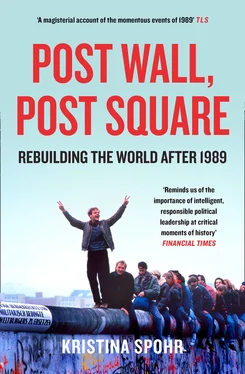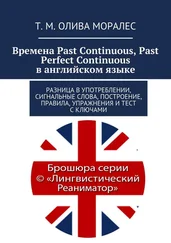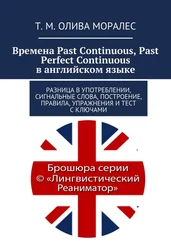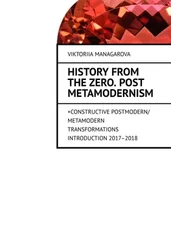Nevertheless most of the East Germans who toyed with escaping were really scared. They did not know about the orders given to the Hungarian soldiers. But then the picnic began. A brass band played, the beer flowed and folk dancers in traditional Hungarian and Burgenlandish attire mingled with the crowd. Some 660 East Germans who attended the picnic took heart that day. As soon as the wooden gate was opened, there was a stampede. They rushed through and, unhindered by the border guards, they entered Austria – surprised and elated. It was the largest mass escape of East Germans since the Berlin Wall went up in 1961. Another 320 managed to cross to freedom elsewhere that weekend.[128]
Such numbers were not in themselves spectacular. Thousands more East Germans stayed behind, hesitating. Over the next few days the Hungarian government increased the number of guards patrolling its western border, which resulted in far fewer refugees reaching the West. Nevertheless, every day more East Germans poured into Hungary. Behind the scenes the FRG government kept pressing the Hungarian authorities to clarify the UN refugee status of the East Germans. But Bonn’s aim was not to turn the flow into a flood – far from it: the FRG was desperate to avoid disorder and instability. Frantic efforts were made to prevent the media getting their hands on an escapee crossing the border or an embassy-occupier ( Festsetzer ) lest such publicity would fan East German hopes of an easy exit at a time when the FRG had agreed nothing formally with either Hungary or the GDR. And the historic shadow of the Red Army also still loomed in the background. What if the situation suddenly got out of hand? What if a crowd of refugees rioted or some soldiers or secret police panicked and started shooting? Would the Soviets suddenly get drawn in? It was in this edgy atmosphere that the transnational migration crisis gathered momentum. Alarmingly, there was still no international solution.[129]
In the end, however, what forced matters to a head was not the toing and froing on Hungary’s borders but the humanitarian crisis in Budapest. The Németh government realised that it could no longer sit on its hands and watch events unfold: before its eyes the crowd of GDR refugees outside the German embassy was growing every day. Some 800 were now camped out near the building. There were also 181 in the embassy grounds and the mission itself had been forced to close to the public on 13 August. Several emergency reception camps were then created in the vicinity by the Red Cross, the Order of Malta and other aid agencies: in the Budapest suburbs of Zugliget (capacity 600 people) and Csillebérc (2,200 people) and later around Lake Balaton for another 2,000 or so. In all the camps food and water were desperately short. There were not enough toilets and showers, let alone sleeping bags, pillows, clothing and toiletries.[130]
In the intense glare of the world media, Bonn was desperate to alleviate the distress of the East Germans and contain the international crisis. But the two German governments were deadlocked about how to deal with these people. The Honecker regime was obsessed with holding on to communist orthodoxy and not letting the GDR drift into ‘the bourgeois camp’. It took no fewer than six conversations between 11 and 31 August 1989 before East Berlin grudgingly promised Bonn that it would not ‘persecute’ embassy-occupiers and would process applications for exit – but without any commitment to give a positive response for immediate permanent emigration. Meanwhile in East Berlin the pressure for such permits was mounting almost exponentially day by day, because of the GDR’s bureaucracy’s restrictive practices and its citizenry’s alienation in the light of Poland and Hungary’s liberalisation.[131]
To resolve the crisis, the West German leadership took the initiative to deal with matters at the highest level, both with East Berlin and Budapest.[132] Normally East German leavers or escapees – being a German–German matter rather than an issue of ‘foreign’ relations – came under the aegis of the Chancellery. But most refugees were in third countries, moreover in or around FRG embassies, so the Foreign Ministry had to be involved. It was run by the forceful Hans-Dietrich Genscher – a man with his own agenda. Born in 1927 in Halle – a town that became East German after 1945 – Genscher felt he had a personal interest, almost a mission, to sort out this issue, going far beyond the call of duty. What’s more, Kohl headed a coalition government, formed by his own Christian Democrats and the liberal Free Democrats (FDP), whose party leader was Genscher. This made the foreign minister also the political ‘kingmaker’ on whom the chancellor depended for his working majority in the Bundestag. So Kohl had to tolerate a certain amount of independence by Genscher in the handling of this deeply national and highly emotional problem, and their relationship was certainly not devoid of rivalry. The result was something like a dual-track policy as the FRG responded to the refugee crisis in the summer and autumn of 1989. The Foreign Ministry handled Budapest and Gyula Horn (as well as Warsaw and Prague), while the Chancellery dealt with East Berlin and Erich Honecker.[133]
But the German–German track was not much use that summer. The West German mission (or ‘permanent representation’) in East Berlin had also been obliged to close, in part because of the crush of would-be escapees. What’s more, Honecker himself was seriously ill with what proved to be cancer and was largely out of active politics for three months from July to late September, as party underlings began to jockey for power.[134]
So the onus fell on the Hungarian government, amid all the other political and economic problems on its plate, to try to square the diplomatic circle as a human drama unfolded in the muddy, squalid camps. It was obliged now to deal in totally novel ways with the FRG in order to address the crisis at the heart of Budapest. Yet, at the same time, the government had no desire to break entirely and openly with the GDR: Horn did not want to repudiate Hungary’s bilateral secret treaty of 1969 about how to deal with ‘criminal offenders’ who got caught planning or attempting ‘desertion from the Republic’. And he also kept resisting West German pressure to recognise the East Germans officially as ‘refugees’ under international law and to call in the UNHCR to deal with them. In short, his government was in a kind of no man’s land between one international order and another. At the end of his tether, Horn told one of Genscher’s staff: ‘Hungary is in a precarious situation.’[135]
Whatever the protocols of Bonn’s informal dual track, it would take the intervention of Chancellor Kohl to force matters to a head – engaging directly with his counterpart in Budapest, Prime Minister Németh. On 25 August Németh and Horn travelled secretly to Bonn to meet with Kohl and Genscher at Schloss Gymnich, a restored castle and government guest house. In a two-and-a-half-hour meeting followed by lunch, Hungarians and West Germans sought to resolve the matter irrespective of what the East Germans wanted.[136]
Kohl and Genscher convinced their Hungarian visitors that the most sensible way forward was to cooperate wholeheartedly with the West on the issue of East German refugees. It was an emotional moment. Németh assured Kohl that ‘deportations’ back to the GDR were ‘out of the question’ and added ‘we will open the border’ by mid-September. ‘If no military or political force from the outside compels us to act differently, we will keep the border open for East German citizens’ as an exit route. Taking in these words, Kohl had difficulty in containing his emotions. Indeed he was moved to tears.[137]
Németh then went on to agree with Kohl that, such was the severity of Hungary’s economic crisis, he would need the help of the West to get on top of it. By contrast, the GDR could do nothing for Hungary; nor could Gorbachev because of his ‘difficult position’ at home, though Németh said it was important to do everything possible to ‘ensure the success of Gorbachev’s policies’ because that was the only way to keep peace in the bloc. In short, by doing as Bonn wanted with regard to the touchstone issue of the East Germans, Németh seems to have hoped to encourage both Bonn and also Washington to offer Hungary financial support and to develop more extensive trade relations. Kohl did not make any commitments then, but promised to speak to West German bankers (and to Bush). A substantive DM 1 billion financial support package duly followed for Hungary’s democratisation and market reforms – comprising a 500 million credit guarantee by Bavaria and Baden-Württemberg and 500 million from the Federal German government. By the end of the visit Németh had made a fateful decision: Hungary would fully open its border to the West for GDR citizens in return for Kohl’s DM to help his country emerge from the bloc into the Western world.[138]
Читать дальше












